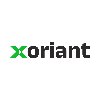Filter interviews by
iLink Digital Interview Questions and Answers
18 Interview questions
I worked on various projects, including a web app for data visualization and a machine learning model for predictive analytics.
Developed a web application using React and D3.js for visualizing large datasets, improving user engagement by 30%.
Created a machine learning model using Python and scikit-learn to predict customer churn, achieving an accuracy of 85%.
Collaborated with a team to design a mobile app for heal...
Middleware acts as a bridge between different software applications, enabling communication and data management.
Facilitates communication between client and server applications, e.g., REST APIs.
Handles data management and integration, such as database middleware like Hibernate.
Provides authentication and authorization services, e.g., OAuth middleware.
Enables message queuing and processing, like RabbitMQ or Apache ...
Advanced SQL queries using window functions enable complex data analysis over partitions of data.
Window functions perform calculations across a set of table rows related to the current row.
Common window functions include ROW_NUMBER(), RANK(), DENSE_RANK(), SUM(), AVG(), etc.
Example: SELECT employee_id, salary, RANK() OVER (ORDER BY salary DESC) AS salary_rank FROM employees;
Window functions can be combined with PA...
Filters in .Net are used to manipulate data before it is displayed or processed further.
Filters can be used for data validation, formatting, or transformation.
Filters are commonly used in ASP.NET MVC for tasks like authentication, authorization, logging, etc.
Filters can be applied globally to all controllers or specific to individual actions.
Examples of filters in .Net include AuthorizationFilter, ActionFilter, Re...
An automation framework is a set of guidelines, best practices, and tools used for automated testing of software applications.
Automation frameworks provide a structured way to develop and execute automated tests.
They help in improving test efficiency, reusability, and maintainability.
Common types of automation frameworks include data-driven, keyword-driven, and hybrid frameworks.
Frameworks like Selenium WebDriver,...
vtable is a virtual function table used in object-oriented programming to implement dynamic dispatch.
vtable is a data structure that contains pointers to the virtual functions of a class.
vpointer is a pointer that points to the vtable of an object.
It allows objects of different derived classes to be treated as objects of the base class.
When a virtual function is called, the vpointer is used to find the correct fun...
Pass by reference and pass by pointer are both ways to pass data to a function, but they differ in how they access and modify the data.
Pass by reference uses a reference to the original variable, allowing direct access and modification.
Pass by pointer uses a pointer to the memory address of the variable, requiring dereferencing to access and modify the data.
Pass by reference is generally considered safer and more ...
manage and unmanage are not standard terms in C++
There are no standard terms or concepts called 'manage' and 'unmanage' in C++
These terms might be specific to a particular framework or library
Without more context, it is difficult to provide a specific answer
C is a procedural programming language, while C++ is an extension of C with object-oriented programming features.
C is a procedural language, while C++ supports both procedural and object-oriented programming paradigms.
C++ has additional features like classes, objects, inheritance, and polymorphism.
C++ supports exception handling and templates, which are not available in C.
C++ has a standard template library (STL) ...
The Two Sum problem asks to find indices of two numbers that add up to a target sum in an array.
Use a hash map to store numbers and their indices for quick lookup.
Iterate through the array, for each number, check if (target - number) exists in the map.
Example: For nums = [2, 7, 11, 15] and target = 9, return indices [0, 1] since 2 + 7 = 9.
Time complexity is O(n) due to single pass through the array.
iLink Digital Interview Experiences
19 interviews found
I applied via Approached by Company and was interviewed in Sep 2024. There were 4 interview rounds.
(2 Questions)
- Q1. Dax questions on calculate,all
- Q2. SQL queries cte,subqueries,windows function
(2 Questions)
- Q1. Power bi service level roles
- Q2. Power bi embedded apps
(2 Questions)
- Q1. Performance optimization
- Q2. SQL stored procedure, business domain knowledge
(2 Questions)
- Q1. Offer negotiation
- Q2. General discussion
Interview Preparation Tips
(1 Question)
- Q1. What is the use of middleware
- Ans.
Middleware acts as a bridge between different software applications, enabling communication and data management.
Facilitates communication between client and server applications, e.g., REST APIs.
Handles data management and integration, such as database middleware like Hibernate.
Provides authentication and authorization services, e.g., OAuth middleware.
Enables message queuing and processing, like RabbitMQ or Apache Kafka...
Skills evaluated in this interview
(3 Questions)
- Q1. C# OOPS concepts
- Q2. SOLID Principles
- Q3. Authentication and Autherization
(2 Questions)
- Q1. Filters in .Net and when to use
- Ans.
Filters in .Net are used to manipulate data before it is displayed or processed further.
Filters can be used for data validation, formatting, or transformation.
Filters are commonly used in ASP.NET MVC for tasks like authentication, authorization, logging, etc.
Filters can be applied globally to all controllers or specific to individual actions.
Examples of filters in .Net include AuthorizationFilter, ActionFilter, ResultF...
- Q2. CROS Policy and its purpose
- Ans.
CROS Policy is a policy that allows employees to work from a different location than their usual workplace.
CROS stands for Company Remote Office Setup.
The purpose of CROS Policy is to provide flexibility to employees in terms of work location.
It helps in improving work-life balance and increasing employee satisfaction.
Examples of CROS Policy include allowing employees to work from home or from a co-working space.
Interview Preparation Tips
2. Good encouragement form management for doing certifications.
Skills evaluated in this interview
I applied via Campus Placement and was interviewed in Oct 2024. There were 2 interview rounds.
1 hour duration , logical reasoning and coding mcq were asked
(4 Questions)
- Q1. Introduction and family background
- Q2. Why do yu want to join us?
- Q3. Where do you see yourself in next 2 years?
- Q4. Why are you interested in Data science and ML? Does your skills align with you interests?
- Ans.
I am interested in Data science and ML because of their ability to uncover insights from data and make predictions.
I am fascinated by the power of data to drive decision-making and solve complex problems.
I enjoy working with large datasets and finding patterns within them.
I believe that the combination of statistics, programming, and domain knowledge in data science is a perfect fit for my skills.
I have experience in p...
Skills evaluated in this interview
I applied via Campus Placement and was interviewed in Jun 2024. There were 3 interview rounds.
It was quite easy and fast
Coding questions were also tgere in the same test as aptitude test
(2 Questions)
- Q1. Tell me about yourself apart from what is mentioned in the resume
- Q2. Walk me through your projects
- Ans.
I worked on various projects, including a web app for data visualization and a machine learning model for predictive analytics.
Developed a web application using React and D3.js for visualizing large datasets, improving user engagement by 30%.
Created a machine learning model using Python and scikit-learn to predict customer churn, achieving an accuracy of 85%.
Collaborated with a team to design a mobile app for health tr...
Easy and little long
(2 Questions)
- Q1. Tell me about yourself
- Q2. Ask someone basic differences
I applied via Naukri.com and was interviewed in Mar 2024. There was 1 interview round.
(1 Question)
- Q1. Basic SQL queries Python Dictionary To code for factories or not Basic HTML questions
Interview Preparation Tips
I applied via Campus Placement
Aptitude online test has 4 sections - verbal, quans, logical, and technical mcq.
(2 Questions)
- Q1. It is a Technical interview . All the are questions are from the resume mentioned projects and skills
- Q2. Asked about my final year project
(1 Question)
- Q1. In HR interview ,they asked tricky puzzle
Interview Preparation Tips
I applied via LinkedIn and was interviewed in Feb 2024. There were 2 interview rounds.
It was based on a coding round where they asked about oops, c++
(1 Question)
- Q1. They asked about the basic SQL, python, and data science
Interview Preparation Tips
(1 Question)
- Q1. Explain about the Automation framework
- Ans.
An automation framework is a set of guidelines, best practices, and tools used for automated testing of software applications.
Automation frameworks provide a structured way to develop and execute automated tests.
They help in improving test efficiency, reusability, and maintainability.
Common types of automation frameworks include data-driven, keyword-driven, and hybrid frameworks.
Frameworks like Selenium WebDriver, Test...
Skills evaluated in this interview
Top trending discussions






iLink Digital Interview FAQs
Some of the top questions asked at the iLink Digital interview -
The duration of iLink Digital interview process can vary, but typically it takes about less than 2 weeks to complete.
Tell us how to improve this page.
iLink Digital Interviews By Designations
- iLink Digital Software Engineer Interview Questions
- iLink Digital Consultant Interview Questions
- iLink Digital Senior Specialist Interview Questions
- iLink Digital Software Engineer Trainee Interview Questions
- iLink Digital Senior Analyst Interview Questions
- iLink Digital Associate Consultant Interview Questions
- iLink Digital Intern Interview Questions
- iLink Digital Data Engineer Interview Questions
- Show more
Interview Questions for Popular Designations
Overall Interview Experience Rating
based on 21 interview experiences
Difficulty level
Duration
Interview Questions from Similar Companies
iLink Digital Reviews and Ratings
based on 168 reviews
Rating in categories
|
Senior Software Engineer
138
salaries
| ₹10.3 L/yr - ₹18 L/yr |
|
Software Engineer
127
salaries
| ₹3.8 L/yr - ₹8 L/yr |
|
Senior Technical Specialist
110
salaries
| ₹18.4 L/yr - ₹32 L/yr |
|
Technical Specialist
104
salaries
| ₹13.6 L/yr - ₹23.5 L/yr |
|
Software Engineer Trainee
53
salaries
| ₹3.5 L/yr - ₹6 L/yr |

Xoriant

Photon Interactive

CitiusTech

Iris Software
- Home >
- Interviews >
- iLink Digital Interview Questions














